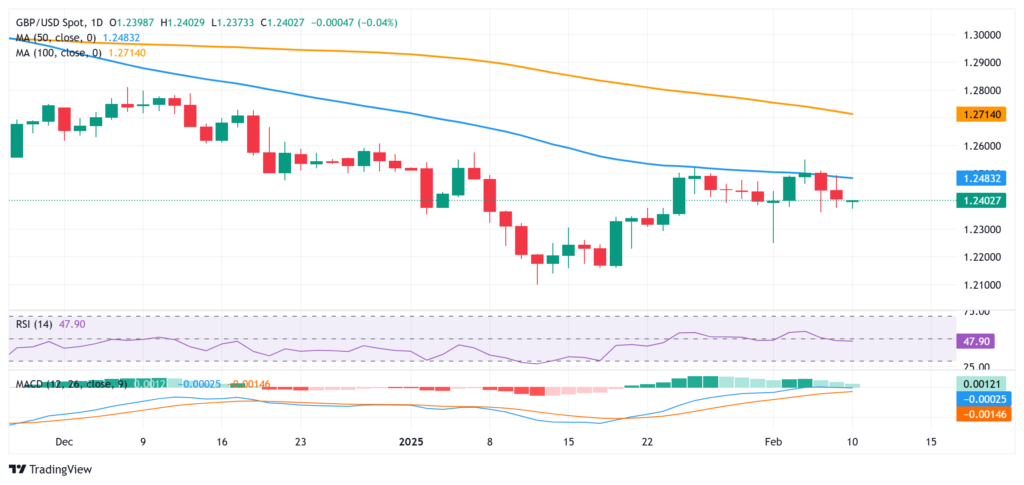The British pound hovered around 1.2400 against the US dollar, struggling to gain momentum as the pair remained trapped below its 50-day simple moving average (SMA). Despite minor recoveries, the broader trend suggested downside risks, with investors weighing economic data and central bank policy expectations.
The US dollar held firm, supported by steady Treasury yields and lingering speculation that the Federal Reserve will keep interest rates elevated. Softer US data briefly pressured the greenback, but traders remained cautious, keeping GBP/USD from staging a meaningful rally.

Meanwhile, the Bank of England (BoE) maintained a dovish outlook, reinforcing expectations that the central bank could pause or cut rates in the coming months. With inflation showing signs of easing and UK economic growth remaining fragile, the pound lacked a clear bullish catalyst to push higher.
Technical indicators showed GBP/USD facing resistance at the 50-day SMA, limiting further gains. A decisive move above this level could signal renewed bullish interest, but failure to break through may leave the pair vulnerable to further downside, particularly if risk sentiment worsens.
Looking ahead, traders will focus on upcoming UK GDP data and US inflation figures, which could influence the pair’s direction. A stronger UK economic outlook may support the pound, while hotter US inflation could reinforce the Fed’s hawkish stance, boosting the dollar.
For now, GBP/USD remains under pressure, with 1.2400 acting as a key pivot level. Unless a catalyst emerges to shift sentiment, the pair could continue to struggle below its 50-day SMA, leaving room for further declines.













